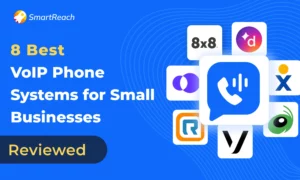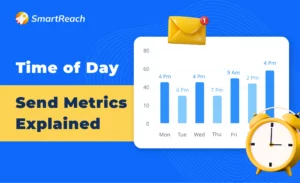How to Maximize B2B Sales? | Finance, Data, and Incentive Integration
B2B is quite unique. On the one hand, businesses make purchases that are more committal and less impulse-based. This means that using sales tricks like FOMO or rounding up the cost to $.99 is not going to do the trick as well as you would expect it to. Executives who make these decisions are still humans and make these decisions based on emotions, but at the same time, they have to justify these expenses and investments and think ahead.
So, how do you maximize B2B sales? How do you utilize finance, data, and incentive integration in order to maximize SaaS sales, which are unique in their own right? Let’s check it out.
Maximize B2B sales
Incentivize your team to try harder
To maximize B2B sales is a lot different than boosting their B2C counterparts. With B2C, it’s all about the charisma of the salesperson and their ability to speak to the emotions of the potential buyer. In reality, you have this type of impact on the buyer, even in B2B.
Businesses are (still) not run by an AI, which means that there’s a person out there making a decision about whether to buy from you. Whether they like what they see will be a factor in their decision but, at the same time, they usually have to justify their decision. This limits the potential impact of this personal preference of theirs.
In other words, if you can make your offer almost as good as that of the other company and leave a stronger impression, you can convince them that you’re a better choice (even if it wouldn’t always appear so on paper).
One of the best semi-subjective factors is the dedication of your team. You see a lot of businesses that agree to do business with smaller partners just because they believe that they’ll try harder.
Now, while your marketing team can make a compelling case and a promise that it will be so, in reality, they have to see that your team is actually making an effort and trying harder.
There are a lot of ways to get this “higher level of dedication” from your team. First, you could issue performance-based bonuses.
Second, you could try giving your staff members equity in your firm. This will make them more interested in the actual growth of the company since it will directly increase their equity. This is the so-called enterprise management incentive (EMI).
Utilizing data to create a better offer.
Remember that when you have to to maximize B2B sales, you’re dealing with a much longer decision-making process. Sure, a customer may just decide to make a purchase and do so on impulse, but when it comes to a decision by an executive, things will be a lot slower.
First, since it’s a SaaS service that we’re talking about, we’re talking about a lower initial investment but a higher long-term commitment. Just think about it: sure, you’re not paying as much, but you’re making a decision for your entire team. All your employees will be trained to use this new platform or data pipeline tools, and if you decide to change it in the future, you will have to restart your onboarding process.
The onboarding process can be quite expensive, but changing a business model is always a nuisance, and that’s the main thing that concerns these executives.
Now, you need to focus on a few things in order to personalize the offer so that they acknowledge that they’re getting the right ROI.
Still, when collecting this cookie data, you need to ensure that you do it all in agreement with different compliances. You also need to understand a thing or two about major compliances (GDPR and CCPA), as well as know exactly which regulations are affecting you.
The most important thing when collecting data to improve an offer for maximize B2B sales is that you need to focus on firmographic (not demographic) metrics. Instead of caring about the age, education, and sex of the user, you care about things like company size, industry, and location. The most important thing when collecting data to improve an offer to maximize B2B sales is that you need to focus on firmographic (not demographic) metrics. Instead of caring about the age, education, and sex of the user, you care about things like company size, industry, and location.
Utilizing data driven decision making tools can help analyze these firmographic metrics effectively, ensuring that your offerings are tailored to meet the specific needs of each business client much like in AI in credit risk management.
Increase your investments in team training.
The next thing you need to keep in mind is the fact that it’s the skill of your team, not just their dedication, that makes the difference. Sure, if they don’t try, it doesn’t matter how much they know; however, now that we’ve extensively covered the matter of incentives, it’s time to address their dedication quickly.
Before we move on with this topic, it’s important to mention one thing – quality training costs quite a bit, and if you want your team to reach their full potential, you need to ensure they get the best training possible. This means that you need to have a decent budget for these courses, webinars, and guest lecturers.
Sure, some skills you can mentor them on, but there are tasks like cold email sending that require more finesse than meets the eye at first.
The biggest problem with this is that your team members automatically assume that they already have experience with this subject matter since they’ve been sending emails their entire life. Cold emailing for sales is different, especially when it’s B2B.
This is like people assuming that they could run a brand’s social media account since they’ve been running their own accounts their entire lives. This is a common fallacy that comes from overconfidence, false equivalence, and the lack of real understanding of the subject matter.
To maximize B2B sales is both intuitive and technical, which is why success depends on many factors. You need to have a good, reasonably-priced product, a competent team, and great marketing. In the end, the competence of your team will determine your sales-closing rate. The last part can be improved through training.
Improve your pricing strategy.
Your sales team will be limited by the cost of your products. Sure, your marketing team can try to spin the story that, even though the product is comparable, it’s justified for your brand to charge more than the competitors, but this is not as effective in B2B sales.
So, you need to start by researching your competitors and figuring out what you can afford to charge and still run a profit.
Now, the cost of maintenance and development (not to mention paying your team) is present, but you’re not really running out of items as you sell them off, which means that your overhead should be significantly lower than that of a traditional retail business. After all, you’re selling a service, and the maintenance costs you the same, almost regardless of how many customers you have.
This is why you have more freedom when setting a price.
The person calling the shots (on who the product will be bought from) will do more research. They’ll actually look up what competitors are charging, do an audit of their own needs, and be less likely to buy a product from which they won’t get the value.
In SaaS, the best way to handle this is by setting several different payment plans. This will allow your buyers to pick a payment plan that fits their budget. Moreover, it allows them to pick the size of the plan (number of devices or accounts that this particular SaaS platform supports) and the list of features that they’ll actually use.
This will create two massive advantages. First, they’ll believe that they’re getting a great deal for their money. Second, they’ll see that your enterprise has a potential for scalability.
More free trials and demos.
People need to interact with your platform in order to see if it’s worth buying. The best way to do so is to give them a free trial or a demo and allow them to use it for a while before they decide to purchase.
The majority of SaaS businesses actually ask for credit card info, which prevents a person from just registering with a new email every time a free promotion expires. It also makes it easier to keep them subscribed since a lot of people just stay because they can’t be bothered to cancel. However, these strategies do not work when trying to maximize B2B sales.
When a business buys a plan, it’s so that the entire team can use it. The platform is used on a regular basis, and there’s no “flying under the radar.”
Still, giving them a free trial or a demo will allow them to enter this arrangement with more confidence. Not only will this increase your immediate sales, but it will also reduce your churn rate in the future.
Takeaway
Training your sales team, improving your offer, and leveraging data are keys to better sales
Training your sales team will increase the rate at which they close sales. Just keep in mind that to maximize B2B sales is not like maximizing their B2C counterpart. Using data will help you understand what your audience wants; however, without the right offer, it’s all for nothing. Sales are complex, and believing that just fixing one thing will improve them drastically is a bit naive.
About the Author
Srdjan Gombar
Veteran content writer, published author, and amateur boxer. Srdjan has a Bachelor of Arts in English Language & Literature and is passionate about technology, pop culture, and self-improvement. In his free time, he reads, watches movies, and plays Super Mario Bros. with his son.




